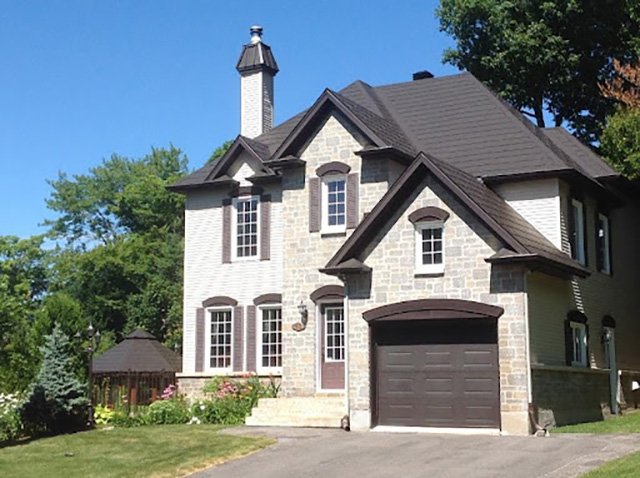
Which Type of Roof Beats the Heat Best? Youtube Building Expert Matt Risinger Puts Asphalt Vs. Metal to the Test in Latest Video
Not all roofs are created equal, and that’s especially true when it comes to controlling extreme summertime temperatures.
In his just-released video, Build Productions YouTube star and building expert Matt Risinger puts different roofing materials to a real-world test to see how they perform in extreme heat conditions, a topic particularly relevant given the hotter-than-ever temperatures hitting many parts of the U.S. and Canada this summer. As a builder from Texas, Risinger knows the need for homeowners to achieve better energy saving and stay comfortable in extreme heat and humid conditions better than most.
For his test, Risinger uses infrared technology and temperature gauges to measure roof surface heat and to simulate interior “attic” heat transfer. The video shows how quality metal with high-performance coatings can lower rooftop solar heat gain inside and out by as much as 30 degrees compared to asphalt. By emitting solar heat gain to help keep homes cooler, even darker color metal roofs help lower temperatures during sizzling summer weather. Matt Risinger’s new video “The Hottest Roofs Might Surprise You” can be found at https://youtu.be/JqznvfUlGUo
“Metal roofs can definitely save energy; I think we’ve proven that,” said Risinger. “But another reason why I really like them (metal roofs) is longevity and durability. That’s a big reason why I’ve been installing metal roofs since I started my company in 2005. It’s almost all I put on.”
Choosing the right materials, coatings and installation methods when replacing a roof makes a major difference for increased protection and comfort, and it adds up to real dollars and cents: Research indicates that homeowners can save up to 40 percent on annual energy costs by simply selecting the right type of roof and paying attention to proper installation practices. That represents not only significant savings on cooling costs, but also better performance to help keep occupants comfortable.
Better Rooftop Efficiency Explained
To comprehend how roofs can increase efficiency through shielding against the sun’s energy, it’s important to understand the different types of sunrays, which are divided into UV, Visible and Infrared. Infrared, non-visible rays make up the biggest majority, and they produce heat. UV rays (non-visible, cannot be felt, yet can cause wear and tear on building materials) and visible rays account for the rest.
While even basic, unpainted metal roofs will reflect more solar radiation than asphalt roofs, by choosing the proper colors and coatings, low-glare metal roofs reflect most non-visible, infrared and UV rays—the kind that produce heat and are the most damaging. And given the type of rays they reflect, homeowners do not need to worry about their rooftops giving off a shiny glare, even in bright sunshine.
Many cool metal roofs are ENERGY STAR-qualified based on total solar reflectance and thermal emittance properties, a term that describes how much of a material’s absorbed energy is released and emitted back into the atmosphere (versus causing indoor temperatures to rise).
Tips for Homeowners
- Ask your installer what methods they plan to use to help ensure extreme temperature protection and performance.
- Pay attention to air flow and ventilation—both of which are essential in all seasons. Good eve and ridge ventilation systems help maintain consistent roof temperatures.
- Check building codes in your area to make sure your insulation meets or exceeds standards.
- Consider other potential threats; areas that experience extreme heat also are often prone to wildfire danger. Many quality metal roof systems carry a Class A fire rating—the best in the industry for fire resistance.
- Ensure your installer uses quality materials from a reputable manufacturer and offers solid warranties. For metal roofs, check to see if they are members of industry-leading organizations that stand for quality, including the MRA.
- Choose the most sustainable material possible to help increase energy efficiency while reducing waste. Metal roofs save energy, can last up to three times as long as other materials and are 100 percent recyclable at the end of their long life.
- Do your homework before you re-roof. Learn more by tapping into free resources such as the MRA’s Residential Metal Roofing Buyer’s Guide at www.metalroofing.com